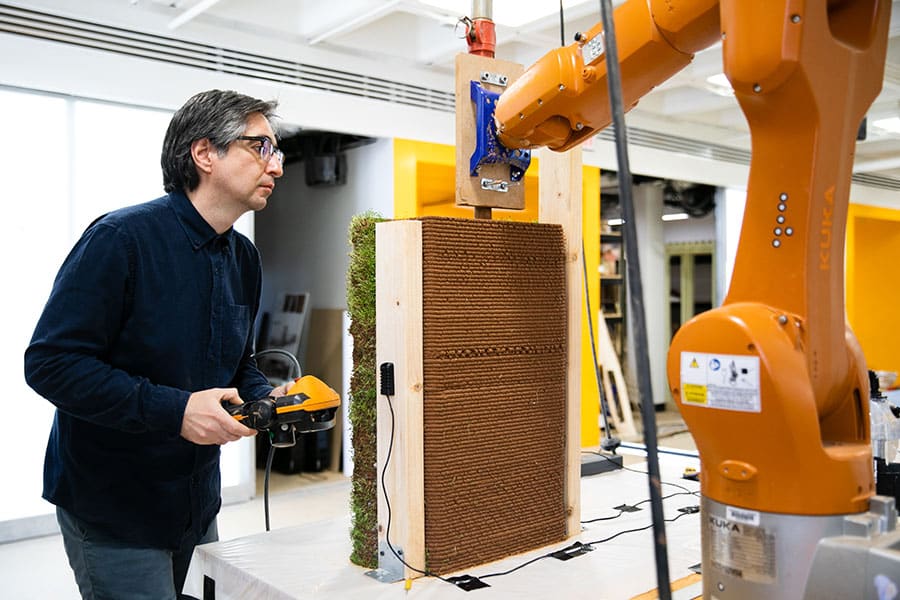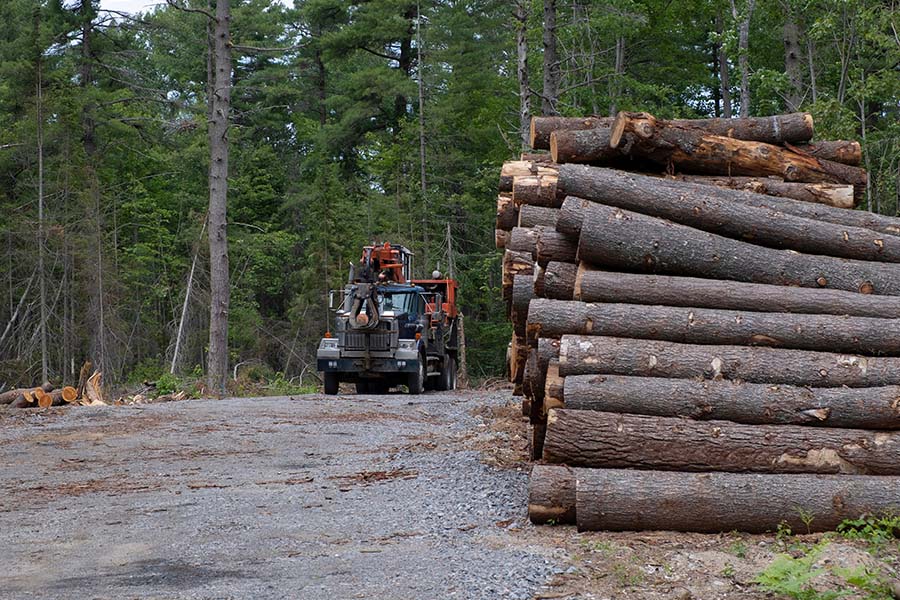Construction made from the earth, also known as earthworks, is one of humanity’s most ancient building technologies. From the long barrows of Neolithic Europe to Inca terraces that characterize the Americas, structures made from earth last long after the societies that created them fade into history.
Now, one University of Virginia professor is working to bring this ancient construction technology into the modern age, using experimental 3D printing methods that have created a whole new way to build living walls—structures that are covered with plants that help a building achieve both functional and aesthetic goals.
We spoke to professor Ehsan Baharlou, one of the effort’s lead researchers, about the exciting environmental and creative potential of this ancient building method—and how earthworks just might be poised for a surprising comeback in the design and construction industry.
A collaborative process
According to Professor Baharlou, the idea for re-imagining earthworks came from conversations he had with colleagues working at different departments in the University of Virginia.
Baharlou said part of the inspiration behind the project was the group’s shared fascination with the history of earthworks and what they saw as their untapped potential to be re-imagined using modern technology.
“Earthworks building has been happening for thousands of years,” Baharlou said, “but with recent advancements in 3D printing technology we’ve discovered how easy it is to print these materials. Our approach was trying to implement new functions into this type of printing system, using a material with a low carbon footprint and adding a method that would allow us to actually absorb carbon from the atmosphere by adding an extra functionality to the wall system.”
The method that Baharlou and his team landed on: germinating seeds within the material of the printed walls. “Our idea was to create a soil-based material that would support the process of germination and blooming,” he said, “with an environment that provided moisture, humidity and an appropriate temperature. As the seeds grow, they grow roots, drawing from nutrition in the soil; they’ll effectively sequester carbon from the atmosphere.”
Technological advances, environmental gains
One of the most interesting aspects of adding germinating seeds to 3D-printed soil structures was the idea of effectively increasing the eco-friendly nature of an already low-impact building technology.
“When we use local materials like we do in the creation of soil walls, we’re able to avoid the carbon impact of transportation, processing and many other steps of conventional construction that cause the highest rate of carbon output,” Baharlou said. “Our idea was to develop a process that used local Virginia soil. We did a series of tests on the qualities of the soil before we developed our bio additives and prepared the soil to be printable.” In addition to the qualities of the soil as a building material, Baharlou said he was struck by the aesthetic possibilities of the red clay.
Once the material was developed, Baharlou and his team needed to determine the best way to use it to build. “We decided on using a robotic printing method for the extra control it provided us over the precision and quality of the printing process,” he said. “The idea at the beginning was drawing on the concept that architecture as an applied science. We started small printing, then scaled up to create larger and larger structures.” The next project on the team’s list is using on-site printing to create a growing earthworks re-creation of the University of Virginia’s iconic serpentine walls, with many more structures to come.
While most 3D-printed buildings require their robots to mix and print, Baharlou and colleagues gave their equipment another job: planting seeds. “We print soil, mix the soil, mix in the seeds and begin the process all over again,” he said. “We can program the robot to control which side of the wall germinates and which is the non-germinating interior.”
Throughout every step of the discovery process, Baharlou and colleagues kept the idea of eco-friendly construction top of mind. “We wanted to create a system that could become part of both simple construction to rapidly respond to housing needs, but also become part of the chain of recycling and even upcycling during the materials and fabrication process,” he said.
Where ancient techniques meet modern technology
Just as the Andean people grew grasses on their steppes to increase the stability of the loose mountain soil, Baharlou said that printing in seeds within the structure of the walls increases their strength and stability.
“When you look at the way landscape architecture has traditionally been used, often plants are selected for their ability to prevent erosion,” Baharlou said. “Our idea was to also use planting to avoid erosion, increasing the stability of these 3D-printed soil walls, which are becoming increasingly common.”
Baharlou and colleagues hoped that the creative use of plants such as white clover and other hardy microgreens would help reduce the need for chemical additives in 3D-printed structures, replacing them with an eco-friendlier, bio-based material.
“Within the concrete printing industry they use different recipes, which they’ll replicate over and over again to build structures within various communities,” Baharlou said. “Our hope was to develop our own recipe that could use a bio-based material additive to increase stability and help to create structures that would last.”
Baharlou said that the team needed to use advanced materials science techniques to create these living structures. “It was very challenging to work with so many different layers that weren’t solid, controlling the setting time,” he said. “We needed to keep the soil at a high enough water content to encourage germination, while still allowing the material to set.”
Baharlou also said the team came up against the various limitations of existing 3D printing technology. “From the geometrical point of view, there are limitations with how much we can play with space,” he said. “We decided to play with the technology by creating textures and patterns, while being mindful of the moisture levels within the printed walls.”
The design process was inspired by the long history of earth-based architecture as a jumping off point, blending old designs with cutting-edge technologies. “The connection between earth and architecture in general is not a new thing,” Baharlou said.












